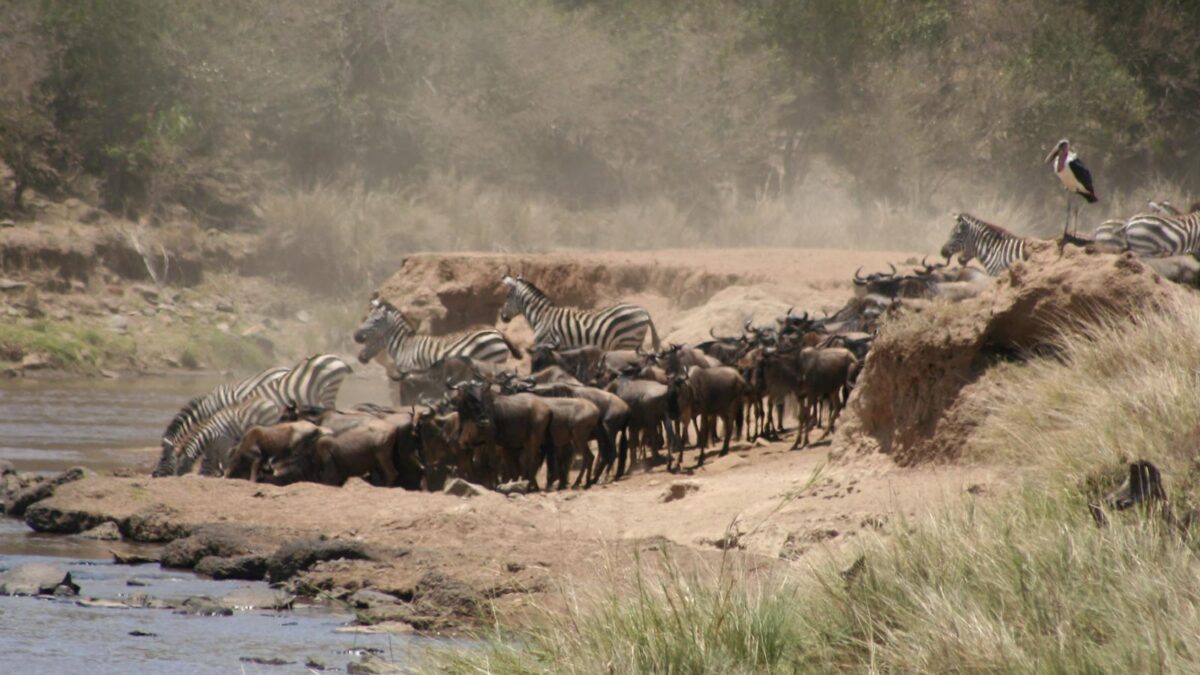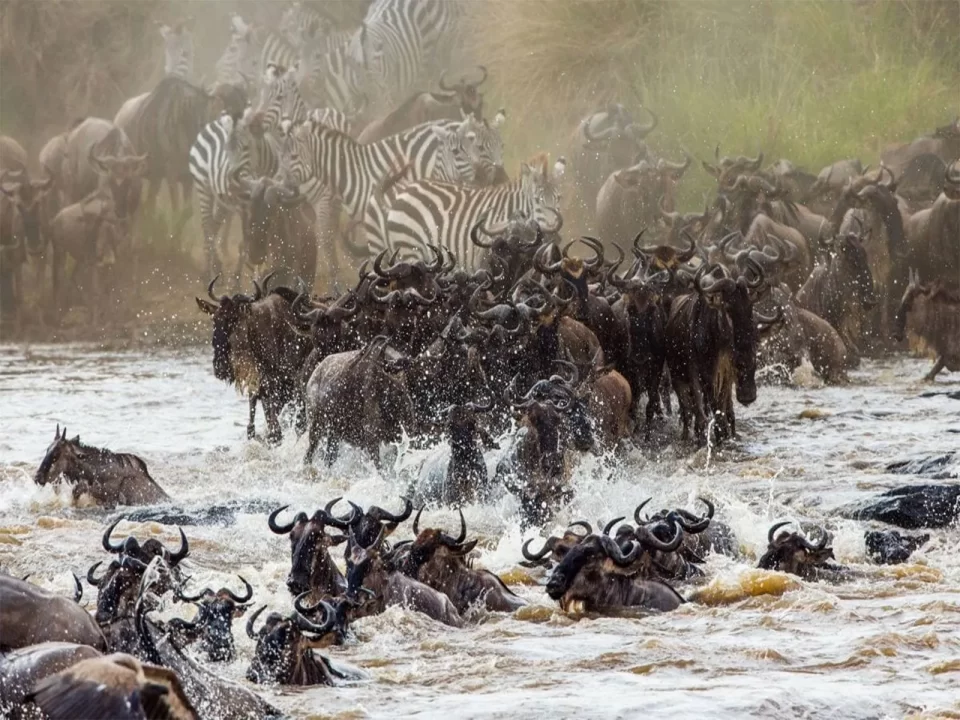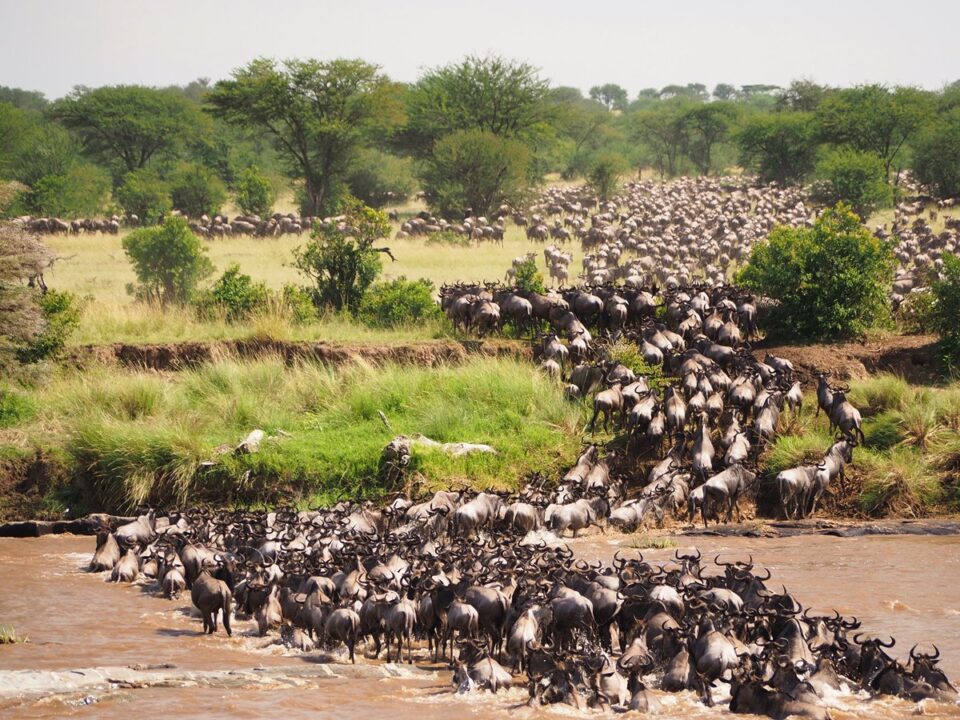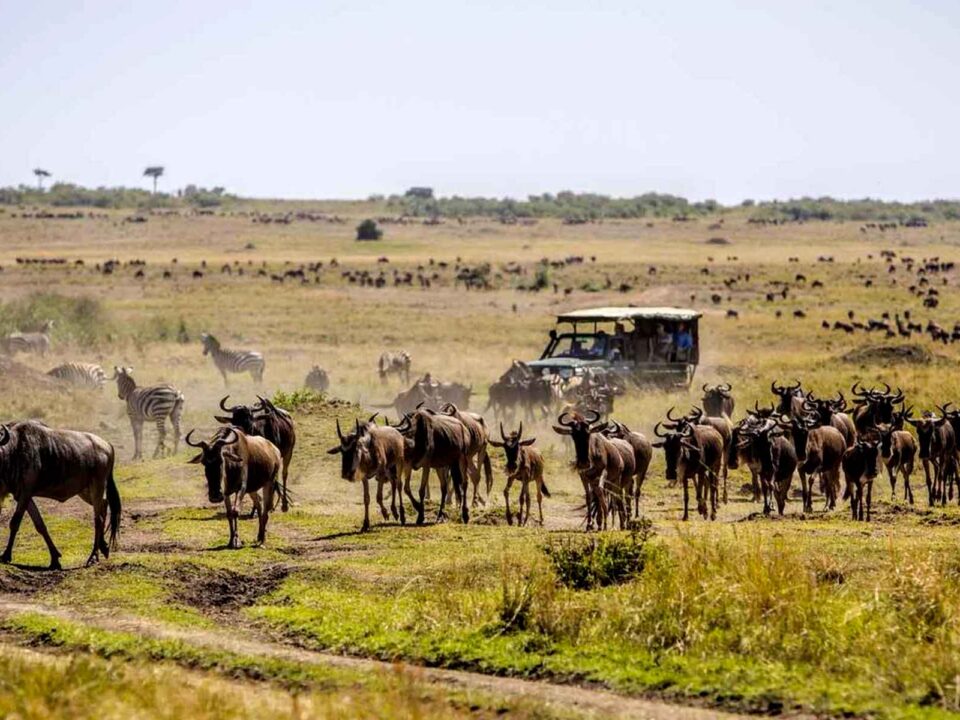Mara River Wildebeest Crossing Safari

Annual Wildebeest Herd Tracker Information
December 11, 2023
3 Days Bwindi Gorillas Trek in Uganda
December 11, 2023Embarking on the Mara River Wildebeest Crossing Safari – A Tale of Tanzania and Kenya Wildlife Holidays
The Mara River Wildebeest Crossing Safari beckons adventure enthusiasts to witness one of the world’s most renowned tourist spectacles within the Mara River Basin. This basin not only hosts the iconic great wildebeest migration but also stands as a vital component of the intricate ecosystem supporting Kenya and Tanzania. The ebb and flow of the Mara River serve as the lifeblood, orchestrating the grandeur of the great migration. Without the natural rhythm of this watercourse, the essence of the migration would be lost. The Mara River Basin emerges as the azure heart pulsating through the veins of Kenya and Tanzania, underpinning their economy and societal fabric.
Broader Significance of the Mara River Basin
Beyond the borders of wildlife phenomena, the Mara River Basin assumes broader importance for both Kenya and Tanzania. Although hosting a mere 1.4% of the Kenyan population and 0.7% of the Tanzanian populace, the basin plays a pivotal role in sustaining economically lucrative activities, encompassing tourism, agriculture, and mining. Collectively, these sectors contribute significantly, ranging between 10-15% to the GDP of both countries.
Yet, the delicate equilibrium of the basin is imperiled by a spectrum of risks. From transformations in land use within the upper catchment to river system pollution and the development of infrastructure like dams, hydropower projects, and irrigation facilities, threats loom large. The potential disruption of natural river flows poses a considerable risk, compounded by the specter of extreme climate events driven by climate change, casting shadows on the ecosystems supporting the shared prosperity of Tanzania and Kenya.
Challenges and Risks on the Horizon
Against a backdrop of sustained population growth in the basin, hovering at approximately 3%, escalating demands on natural resources have unfolded. This surge has witnessed an expansion of agricultural lands at the expense of the basin’s vital forests and grasslands. The consequential effects, manifested through deforestation and heightened water extraction for livestock, agricultural irrigation, and industrial purposes, add layers of complexity to the basin’s sustainability.
Given the modest scale of the Mara River, unabated abstractions portend severe degradation of the riverine ecosystem. The ripple effects extend beyond ecological concerns, encompassing the basic needs of communities residing along the river. The specter of a parched riverbed poses profound implications for humans, livestock, wildlife, and the overarching economy reliant on the basin.
Preserving the Vitality of the Mara River – Environmental Flows as a Panacea
A viable avenue to safeguard the health of the Mara River lies in securing environmental flows. However, these crucial flows are currently under threat within the Mara River Basin. The reserve flow concept, designed to allocate surplus water for abstraction after fulfilling minimum standards each month, is facing challenges, particularly during drought years. A discernible trend towards undesirable alterations in the Mara River’s flow regime is surfacing, posing a clear risk to the ecosystem.
Collective Action for Sustainable Development
Conserving a robust, free-flowing Mara River emerges as a linchpin for Kenya and Tanzania’s multifaceted interests, spanning economic, social, cultural, and environmental dimensions. Future developmental endeavors in the basin necessitate a conscientious acknowledgment that the vitality of the Mara River represents the Blue Heart sustaining the economies and societies of Kenya and Tanzania.
Collaborative efforts, wherein each sector assumes responsibility and undertakes actions conducive to sustainable development, form the bedrock for preserving the future of the Mara. In this collective endeavor, every stakeholder plays a pivotal role, shaping a harmonious balance amidst competing needs. Trek Africa Expeditions stands as a facilitator, enabling enthusiasts to partake in the Mara River Wildebeest Crossing Safari across both Tanzania and Kenya, fostering an appreciation for the delicate dance of nature.




